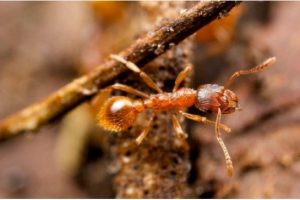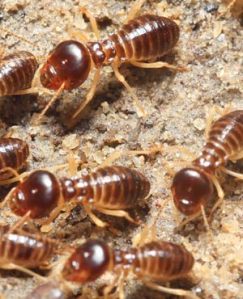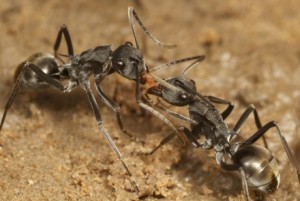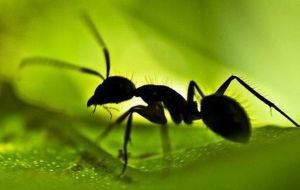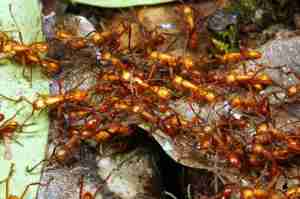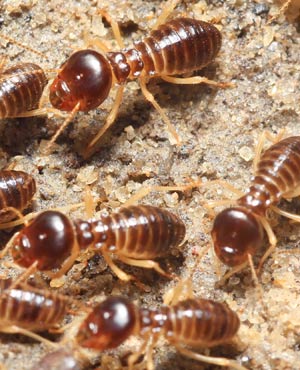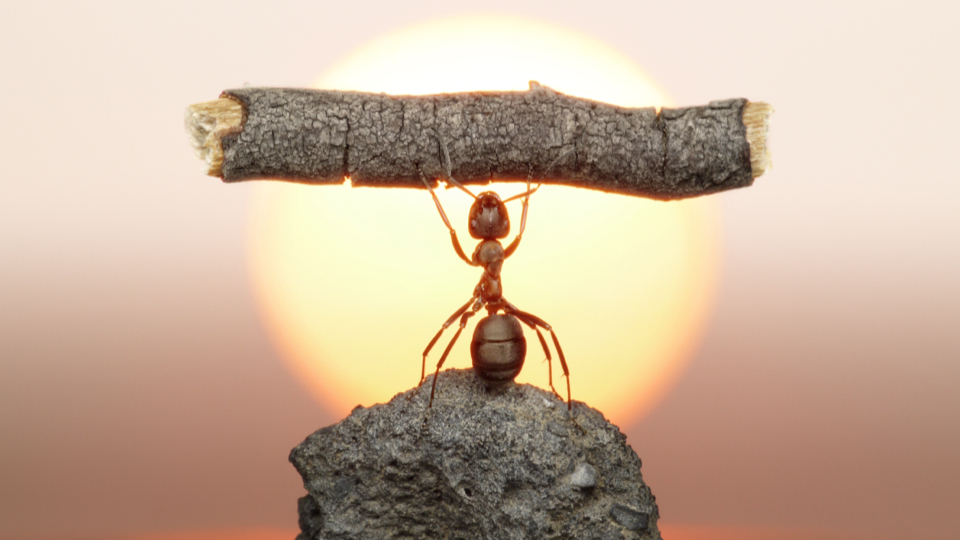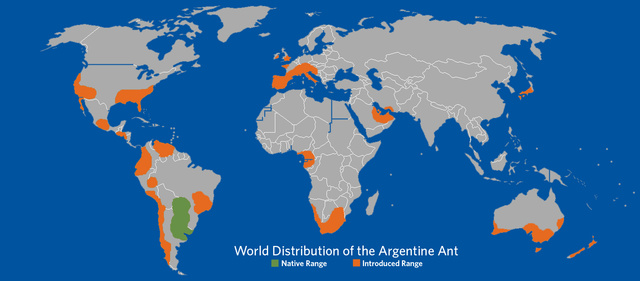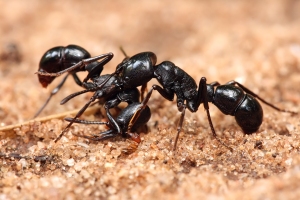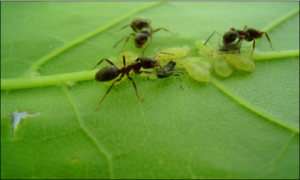I’ve got ants. Well, not “I,” as a personalised, privately owned individual, per se, as such. What I mean to say is: I have been inundated with an outpouring of ants, in and around my house. Lots of them.
Now, in this country, our democratic freedom of movement is guaranteed by the Preambling Constipation of the Republic of South Africa, 1996. By law, our ants are allowed to move onto and into any open area, building, farm, or vacant plot. Once they have moved in, or on, they become known as “resident ants.” They then proceed to demand “seevass deelee varry.” Without paying a cent.
Very similar to our squatters and their “informal settlements.”
Trying to get rid of them, or evicting them, is a very different kettle of another fish altogether. You have to provide them with what is known in the traditional isiXhosa lingua franca as: “alternative housing.” The squatters, that is, not the ants.
If all else fails, you send in the Red Ants. Which, in my case, I cannot do. I have a problem getting rid of ants in the first place. Sending in more ants will not ameliorate the problem.
So, after giving the matter serious thought and considerable consideration, praying to Wakan Tanka for guidance, and checking my options on Google, I decided to poison the lot of them.
Not the squatters, you understand? That would be unconstitutional; I’m talking about my ants.
The squatters are voters, and like the taxi drivers, they are above the Law. What little there is left of the Law; if any. Anyway, the squatters outnumber the ants.
At my local Pick ‘n Pay, on the Weapons of Mass Destruction shelf, I found enough poisonous substances to kill all the Tea in China. I selected a spray bottle with a label which reads: Reg. No. L6399 Act No. 36 of 1947.
This sounded like good stuff. The bottle was of a good vintage – one year older than what I am. I can respect that. It’s come a long way. Just like me.
As an Ant Bully of some ill repute, I decided to conduct an unbiased test on the product. Here are my test results:
Name of Product: DYNEST Extended control. Slow release microcapsules.
Product Claims: DYNEST contains deadly microcapsules which attach themselves to insects, slowly releasing insecticide. The special formulation allows the microcapsules to cling to insects – even when they crawl up vertical surfaces.
DEADLY TO CRAWLING INSECTS, INCLUDING: Cockroaches, ants, bedbugs, fishmoths, moths, fish and chipmunks, etc. Insect control will be noticed within 6 hours, 5 minutes, and 14 seconds after spraying DYNEST, and will continue for months. A shorter period of control (6 hours, 5 minutes, and 13 seconds), can be expected if DYNEST is applied outdoors.
WARNINGS:
Never point the spray gun at anybody. Toxic to fish and cows and geese (especially to ganders). Store away from food and feed and fie and foe and fum. Keep out of reach of children – unless you want to get rid of them.
Do not allow humans or pets near treated areas until spray has thoroughly dried – approximately three years. Do not eat, drink, or sleep, for two weeks after using the spray. Destroy empty container, and those who saw you using it. Dead fish floating in fish tanks, and bloated cows, and flightless ganders, should only be removed by fully qualified Hazmat personnel.
INDOOR PROTECTION: Spray where insects are found, including cupboards, where skeletons are stored, and inside government buildings.
OUTDOOR PROTECTION: Create a kill zone. Spray on the ground around the house, in a 10km wide band.
REMARKS: The DYNEST spray gun fits nicely into the hand – making for a lightning fast draw. It has a double-action, hair trigger, which is easily accessible, even for left-handed gunslingers.
The weapon comes in gunmetal grey, with a red nozzle and trigger. The nozzle has two settings: Off and On. Ensure that you know and understand the difference: On means it’s On. And Off means it’s NOT On.
Lastly, the gun has a curse, written in the ancient language of the Apartheid Aztecs, on its side. It consists of just one word: “SKADELIK.” According to an Entomologist, who specializes in prehistoric languages at the University of Mpumalanga, it means: “Prepare to meet thy DOOM, all ye who use this product.”
CONCLUSION: This product is much too dangerous for use by someone as unskilled, incompetent, and untrained in the use of lethal weapons, as I. Its long-term impact on the environment can be catastrophic.
I fired only one test shot in my garage, and since then, my neighbour has been unable to get his car started. A man has threatened to jump from the 23rd floor of the Cape Town Civic Centre. The water in Mothutlung, in the North West, has become undrinkable. A polar bear has died in the Joburg Zoo. Same-sex marriages have been banned in Nigeria. Two tourists have been attacked by an elephant in the Kruger National Park. Justin Bieber is still alive.
The list goes on and on.
I’m not saying that you shouldn’t buy DYNEST. I’m just saying that you should be VERY careful with the stuff. You might accidently poison our squatters and taxi drivers. That’s all I’m saying.
In the meantime, I’ve got ants. Well, not “I,” as a personalized, privately owned individual, per se, as such. What I mean to say is: I have been inundated with an outpouring of ants, in and around my house. Lots of them…

